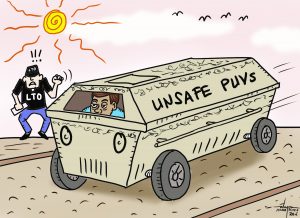Although the Filipino culture values children and most families want them, children contend not only with abusive discipline practices alone. A survey of 3,866 children and youth (aged 13-24) from 172 barangays in 17 regions of the country showed 80% had experienced some form of violence at home, school, or community (CWC and UNICEF 2016). Too many Filipino children are also caught in child labor, cybersex, child trafficking, street living, and abandonment. I will highlight some of these realities. In 2011, the National Statistics Office’s survey identified 5.59 million out of 29 million children aged five to 17 as working children, three million of whom were engaged in hazardous conditions. NSO’s present estimate is still based on the 2011 data. The survey cannot estimate “children trafficked for work, forced and bonded child labor, commercial sexual exploitation of children and use of children for illicit activities and armed conflict.” With accurate statistics hard to come by or either years behind, the ones that get recorded prove disheartening already. Cybersex crime arrests in different parts of the country in recent years revealed that parents and even communities are engaged in using children to perform sexual acts and poses online in exchange for money (Duerr 2016; Holmes 2016; Associated Press 2017). In 2018, there were 60,000 reports logged on cybersex crimes, 80% of whom are minors even as young as a three-month old baby! (Thomson Reuters Foundation; International Justice Mission, CNA 2018).
“Girls and boys are forced to perform sex acts on themselves or each other, molested by an adult, or are abused in other degrading ways,” says Sam Inocencio of the International Justice Mission (IJM) that has rescued more than 370 children since 2016. According to UNICEF, we have become “the number one global source of child pornography, with about 60,000 reports in 2018 alone says U.S. investigator of the IJM. The Philippine Internet Crimes Against Child Center (PICACC) at Camp Crame in Manila works with local enforcers (NBI, PNP), the Australian Federal Police, the UK National Crime Agency and the IJM to deal with this problem. Inaugurated last February, it took on 33 new cases in its first month, adding to the hundreds of backlog cases. They say this trade has grown quickly as it is less risky than selling drugs. Just this November, a mother got arrested in Antipolo using her 14-year-old daughter, together with girls aged 3, 4, 8, and 9 who are nieces and neighbors of the suspect. The month before, another 5 children were rescued and 5 arrested in Biliran. Street children sniffing solvents are also a common sight in Metro Manila and other provincial cities. DSWD says there are approximately 250,000 street children, but other reports say the number could go to a million. Children are not only exploited in hazardous and psychologically damaging situations but are also abandoned, left in orphanages to be either temporarily or permanently cared for, or immediately given up for adoption upon birth. A 2016 report mentioned 1.8 million abandoned and neglected children in the country.
With such grim scenarios that children are in, would we be even surprised to read a recent newspaper headline which says that “young Filipinos are in the midst of a mental health crisis”? Studies and news articles show multi-faceted problems: physical, emotional and sexual abuse in home, school and community; unrestrained exposure to internet; absentee and neglectful parents; poverty; among a number of others (See National Baseline on Violence Against Children: Systematic Review of Literature). It is not just one cause but a number of familial, social, cultural, and environmental factors that affect children and drive them to drugs, depression, and consider suicide as an option. A 2015 Global School-Based Student Health Survey of 8,761 Philippine high school students ages 13-17 showed that nearly 17% had attempted suicide while another 11.5% thought about it. In 2016, 213 children aged 10-14 committed suicide (Gajete 2019, The Manila Times). Child psychiatrists, psychologists, and life coaches attest to the increase of suicide cases and mental illnesses and depression among the youth have drastically increased (Tomacruz 2018, Rappler). Some reports attribute it to social media bullying or screen addiction, but one overlooked factor is trauma. Research and studies show that childhood trauma is an important risk factor for developing chronic depression in adulthood, as confirmed in several cross-sectional and longitudinal studies (Negele et al, 2015). A Canadian study of 22,559 persons showed that suicide attempts were significantly higher among those adults who had experienced trauma: physical abuse (12.4% vs 1.9% with no abuse) and sexual abuse (16.9% vs 2.1% with no abuse) as children; and among those who had witnessed parental domestic violence (7.3% vs 2.3% with no domestic violence) (Wagner 2016). (To be Continued)


